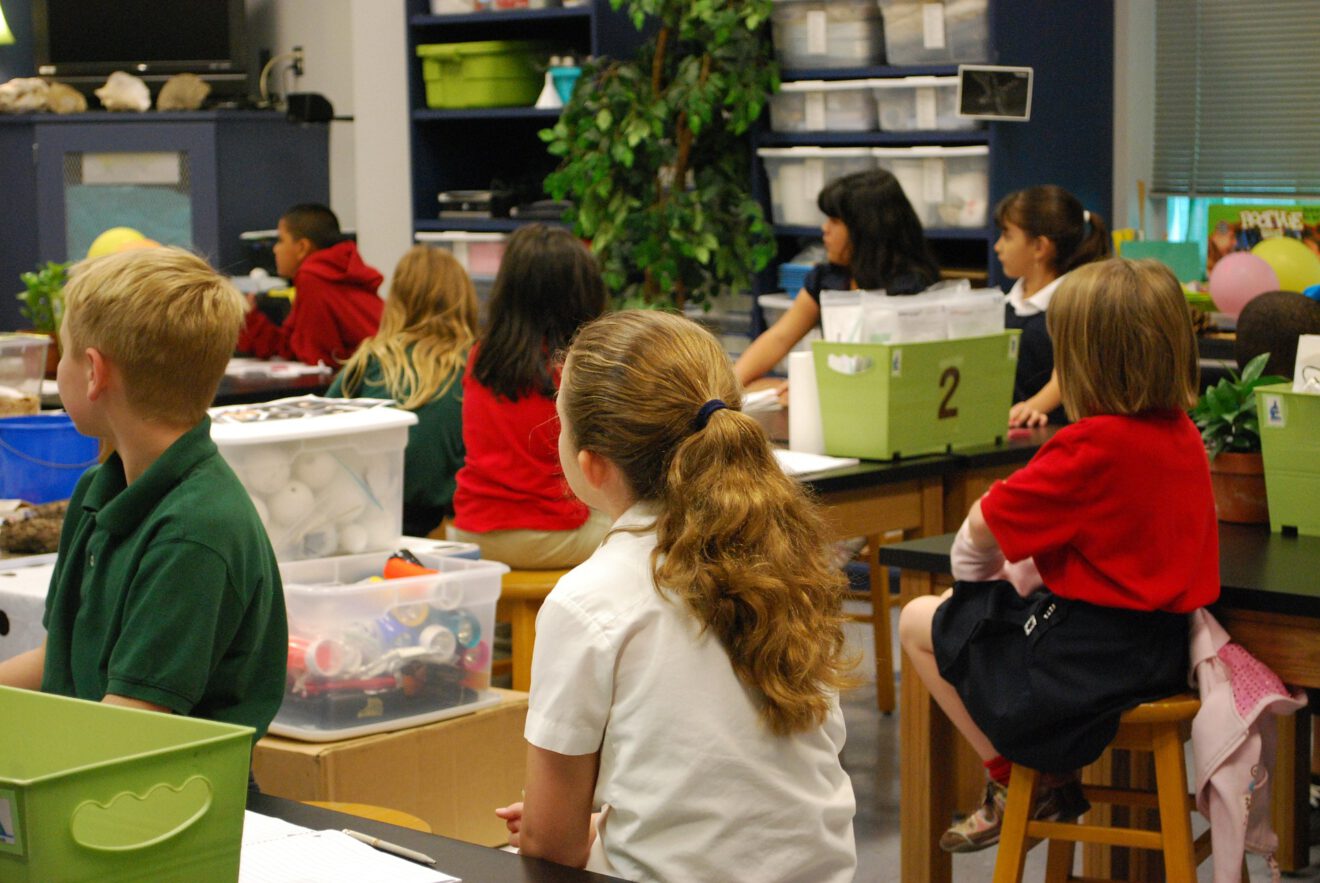Communication and collaboration are key components of any effective classroom. Indeed, they are vital skills that will enrich students’ personal and professional lives long after graduation. But facilitating the development of those skills can be a challenge, particularly if, like me, you are working with students who have special needs. Here are the tools and strategies I’ve found effective in helping students communicate and work together over the course of my 25 years in the classroom.
Tech tools
I use anything and everything at my disposal to help my students connect with the world around them, and sometimes tools that help students communicate and collaborate come from the most unlikely places. All my students have individualized education programs. Many of them don’t have full use of both hands, so our school’s occupational therapist often recommends typing instruction because handwriting is not a viable option for them.
When I began using TypeTastic in my classroom, I expected my students to learn some keyboarding skills. I didn’t expect it to help my students improve their letter-recognition skills. I didn’t expect it to improve their problem-solving skills, so they could meet the goals of two-handed instruction when they only have use of one. I didn’t expect it to help create an atmosphere of friendly competition as they raced their peers to reach the next level of the program. But learning to type has done all these things for my students, and some of them have even been able to communicate verbally instead of relying on image-based expression.
Beyond typing, I use a variety of tools in my classroom to facilitate communication for students. Selection is based on the needs of the student and the circumstance in which the collaboration occurs.
A student with language-processing issues who becomes overwhelmed in a large group discussion, for example, can participate using Flipgrid, which allows them to create videos to talk and reply to one another. Voki helps students with speech issues use their voice to express their opinions in fun and imaginative ways.
One student, a 13-year-old girl who has selective mutism, was able to use Voki to converse with her friend without the face-to-face pressure to force verbal language in a social situation. Making and then importing their Vokis into Seesaw allowed a back-and-forth between the two students, which in turn led the 13-year-old to a new comfort level in the classroom and increased verbal communication in small-group learning and social activities.
I’ve found that using a multimedia application that provides students options for input through voice, visual or text addresses the Universal Design for Learning principals. Our favorite tool for multimedia communication and collaboration is Seesaw, which provides communication within the classroom and opens the door to collaborations around the world with the option to start a built-in class blog. The ability to combine other apps with Seesaw, such as DoInk for green screen projects and Chatterpix for “talking photos” makes it a versatile way to encourage student voice.
Strategies to inspire communication
My favorite technique for communication and collaboration is something I call “rap sessions.” We come together each day and share one moment from the day before that was important to us, good or bad. Each student has to respond to someone else, which fosters the circle of communication. They often work together to solve problems that are related to social skills and how they deal with adversity.
Recently, a student was having a difficult time transitioning from home to school one day. During a rap session, she said that her friend was mean to her. Her partner for the exchange asked how, listening as they worked through the issues without adult intervention. It was so great to see these students solve a personal problem through shared communication.
More generally, my approach to encouraging communication in the classroom and beyond can be summed up in five points:
- Provide as many opportunities for free exchanges — including non-academic conversations — as possible
- Accept and celebrate students’ attempts at communicating
- Demonstrate for students what you mean by appropriate communication and collaboration
- Review exchanges — don’t be afraid to hover or even interject when needed
- Practice, practice, practice!
A clear way to judge the effectiveness of the communication happening in my classroom is having students assess their experiences. Having students actively involved in sharing what they’ve learned is a major indicator of an environment where communication and collaboration are flourishing. A short exit activity can provide a means to mark a student’s contribution. This can also allow for the chance to judge when a student might need a little extra help.
With any student, there are times when their participation falls short of expectations. When this happens, providing options for student communication and collaboration is paramount. Helping them learn multiple forms of expression frees them to join in the collaboration process in a manner most effective for them.
When students are hesitant to participate even when provided with the necessary supports, I provide individual modeling sessions. This can take many forms, from demonstrating how to use a communication device or selecting voice input to transcribe a student’s contribution. Taking the time to help the student find even the smallest success helps to build their motivation to work towards more.
Communication and collaboration in a self-contained classroom may at times look different from an inclusive class, but all classes share similar goals. Regardless of the setting, effective communication skills provide students a voice — and the ability to express it — that is meaningful to themselves and others.
Wendy Thompson is a middle school teacher at the A. Harry Moore School in Jersey City, N.J., where she uses tech tools from Typing Master.
____________________________________________________________________________
Like this article? Sign up for SmartBrief on Special Education to get news like this in your inbox, or check out all of SmartBrief’s education newsletters , covering career and technical education, educational leadership, math education and more.
